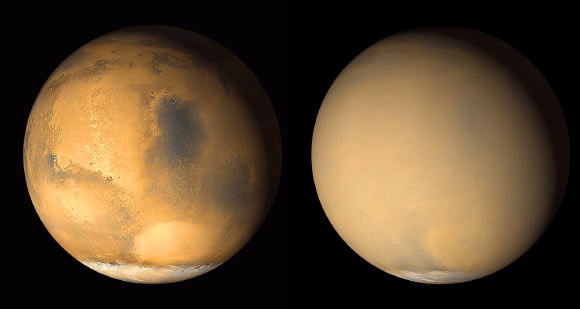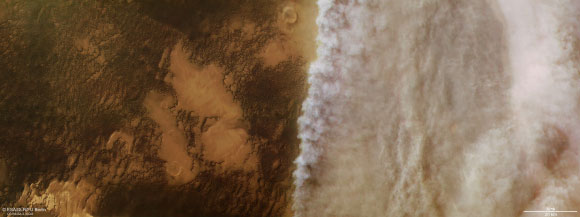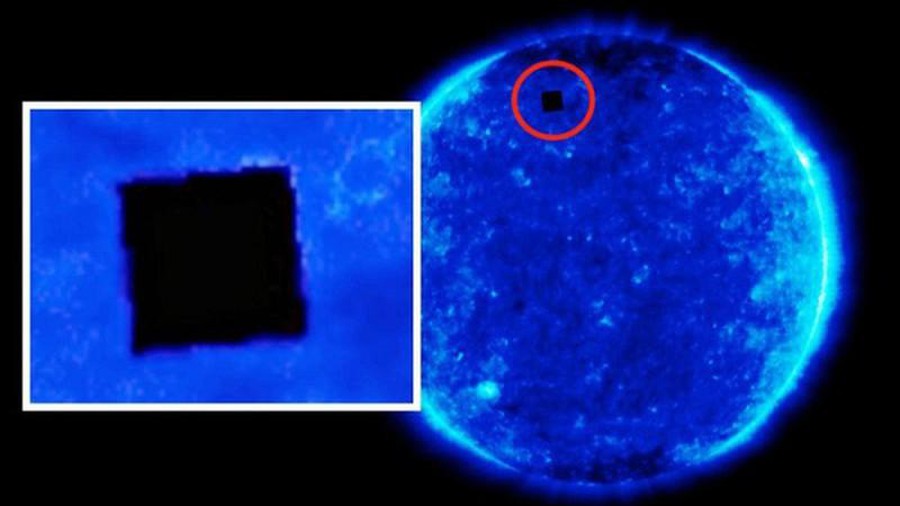The answer to the disappearance of water on Mars already exists
Mars was once a wet planet, but now it has lost most of its surface water through hydrogen-generating reactions, and is now a barren desert with a small amount of water remaining. again as ice at the poles. Using data obtained from NASA's MAVEN (Mars Atmosphere and Volatile Evolution) spacecraft, a team of scientists have uncovered the key causes of water's disappearance on the red planet.
'We all know that billions of years ago, there was liquid water on the surface of Mars. The planet must have had a thicker atmosphere, which somehow disappeared into space. Understanding exactly why water on Mars disappears will be critically important for more in-depth studies on life on this planet, '' said Dr. Shane Stone from the Moon and Planetary Laboratory. at the University of Arizona (USA), the head of the research team, said.
After analyzing a series of data collected by MAVEN, Stone and colleagues found that when Mars was closest to the Sun the planet became warmer and more water-filled. This water is found on the surface of the planet in the form of ice, then gradually evaporates into the atmosphere. This happens periodically once a year on Mars.
In addition, global-scale dust storms that regularly occur across Mars, with their peak summer in the south of the planet, are also one of the main causes of the increase in planetary temperature. as well as helping to push water to even higher levels in the atmosphere.

The picture shows a significant change in Mars' appearance due to dust storm activity in the south of the planet
Notably, data from the MAVEN spacecraft shows that the existence of water in the ionosphere of Mars at an altitude of about 150km - a shocking figure for scientists - is far from the estimate of about 80km has been widely accepted in the community of astronomical research before.
As such, water vapor dissolves in the outermost layer of the Martian atmosphere (specifically at 150km), making water molecules only available for a short time (for about 4 hours) before being affected. Dissolved into hydrogen and oxygen. The hydrogen molecules are then lost forever into space. This process has been going on continuously for billions of years, causing the red planet to lose its composition of water, and eventually become as dry as it is today.
'The loss of atmosphere and water into space is the main reason why Mars is cold and dry relative to Earth , ' said Dr. Stone.

Close-up color image of a small-scale dust storm on Mars
According to estimates by scientists, this process could cause the loss of a global ocean about 60cm (17 inches) deep on Mars about 1 billion years ago.
In particular, supermassive dust storms can cause up to 20 times more water to be transported to the top layer of Mars' atmosphere. For example, a global dust storm lasting 45 days will release water into space the equivalent of a year when Mars is quiet.
You should read it
- 5 most interesting findings about Red Planet
- Why are microorganisms living 'so tough' on Earth but still hard to survive on Mars
- Looking back at NASA's Mars exploration process over the past 20 years
- How does human body change in Mars?
- The strangest objects ever taken on Mars surprised many
- Giant dust storms are taking away water on Mars
- Stunned to discover river fossils on Mars
- Details of the plan to turn a successful Mars man for only $ 100,000 by Elon Musk
- There are major changes in the atmosphere of Mars
- NASA 'Mars' helicopter model is almost ready for the journey to conquer Red Planet
- Find strong evidence of life on Mars
- NASA reveals its latest snapshot of the Martian surface with a resolution of 1.8 billion pixels
May be interested

Detecting monstrous black holes, 20 billion times larger than the sun and growing 'fast'

Mysterious black objects appear in NASA sun photos

3D map of the largest universe ever

Detecting strange objects like alien coffins on Mars

10 strange and interesting facts about the universe you may not have heard of

SpaceX's Crew Dragon spacecraft successfully assembled with the ISS station, completely automated






 Mars: Overview of the 4th planet in the solar system
Mars: Overview of the 4th planet in the solar system 5 most interesting findings about Red Planet
5 most interesting findings about Red Planet Giant dust storms are taking away water on Mars
Giant dust storms are taking away water on Mars Chinese companies simulate the exact Martian environment right in the Gobi desert
Chinese companies simulate the exact Martian environment right in the Gobi desert Why are microorganisms living 'so tough' on Earth but still hard to survive on Mars
Why are microorganisms living 'so tough' on Earth but still hard to survive on Mars Mars has a huge water ocean – but deep underground
Mars has a huge water ocean – but deep underground